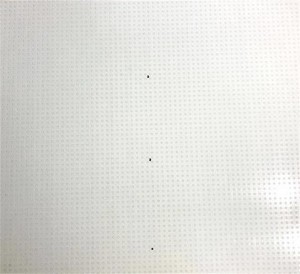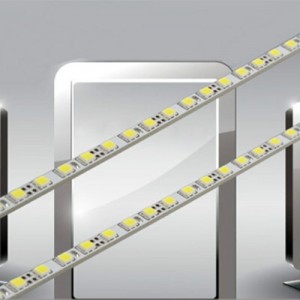Edge-lit LED backlight
LED backlight refers to the use of LEDs (light emitting diodes) as the backlight source of the liquid crystal display, while the LED backlight display is just the backlight source of the liquid crystal display from the traditional CCFL cold light tube (similar to fluorescent lamps) to LED (light emitting diode). The imaging principle of liquid crystal can be simply understood as the fact that the external voltage applied to deflect the liquid crystal molecules will block the transparency of the light emitted by the backlight like a gate, and then project the light on the color filters of different colors to form an image.
Edge-lit LED backlight
The edge-lit LED backlight is to arrange the LED dies on the periphery of the LCD screen, and then match the light guide plate, so that when the LED backlight module emits light, the light emitted from the edge of the screen is transmitted to the central area of the screen through the light guide plate. , So that the overall amount of backlight, allowing the LCD screen to display pictures.
The development of Edge-lit LED backlight
With the continuous development of technology, the side-side LED backlight will develop from a single LED on the upper and lower sides to the final single-sided single LED. Generally, a single LED backlit TV on both sides of 32" that can be seen in the market uses about 120 to 150 LEDs. If the TV backlight is changed to a single LED, the number of LEDs can be reduced to 80-100 (which can eventually be reduced The number of LEDs depends on the brand technology). If the technology is matched, in the foreseeable future, a single LED will be turned from the long side (up or down) to the short side (left or right). This kind of change will use less LED Number of particles.
Life extension
Reducing the use of LEDs not only has a positive effect on cost control, but we also see other positive effects on modules. For example, the module temperature will be reduced due to less use of LEDs. If we take the above 32" LCDTV as an example, less use of the number of LEDs can reduce the module temperature by about 10%-15%. Although we cannot scientifically calculate how much this number can extend the lifespan of electronic parts, or even TVs, from Generally speaking, temperature reduction must have a positive effect on the life of electronic parts. This help is more obvious in larger area LED backlight TVs, because there are fewer LEDs that are relatively seldom used.
Wider viewing angle
In addition, the use of high-performance brightness enhancement film solutions also play a positive role in the TV viewing angle. Because the technical principle of the high-efficiency brightness enhancement film is to transmit the polarized light to the backlight module to circulate and reflect until it penetrates the glass. The backlight module that uses the brightness enhancement film improves the brightness by about 30% compared with the module that does not use the optical film. Since the high-performance brightness enhancement film is different from the general prism film, it does not need to sacrifice the viewing angle to increase the brightness, so such a high-performance brightness enhancement film is very popular with domestic and foreign TV manufacturers. With the increasing area of LCDTVs, consumers have begun to have certain requirements for viewing angles. A 47" LCD TV with over 10,000 inches is placed in the middle of the living room. Of course, the head of the household hopes that guests sitting at any angle can enjoy the same quality of the TV screen.
Energy saving and power saving
Of course, the public can most directly experience the benefits of edge-lit LED backlights, which is the reduction in the overall energy consumption of the TV. Ordinary 32" LED backlight TV, the current level generally consumes about 80W. This level is equivalent to the third level in the latest national energy efficiency standards.
If manufacturers want to improve TV energy consumption standards, there are many corresponding solutions, but using high-performance brightness enhancement film should be the simplest and direct and effective way to improve energy consumption performance. If combined with high-performance brightness enhancement film, the energy consumption can be reduced by about 20%-30% while maintaining the same level of brightness (the final performance depends on the technology of each brand). From a numerical calculation, the energy consumption of the TV can basically be improved from 80W to about 60W through the high-performance brightness enhancement film. The improvement of energy consumption not only allows manufacturers to vigorously cooperate with the national environmental protection policy, but also helps consumers with related electricity bills.
From the above technical analysis, we see that the edge-lit backlight design is of great benefit to manufacturers and consumers. In the near future, edge-lit single-sided single LEDs must be the ultimate destination of LED backlights.
Application scenarios:
● Car: Backlight indicator of on-board DVD buttons and switches
● Communication equipment: mobile phone, telephone, fax machine keys backlight
● Interior signboard
● Handheld device: Signal indication
● Mobile phone: Button backlight indicator, flashlight
● Small and medium size LCM: backlight
● PDA: Key backlight indicator









